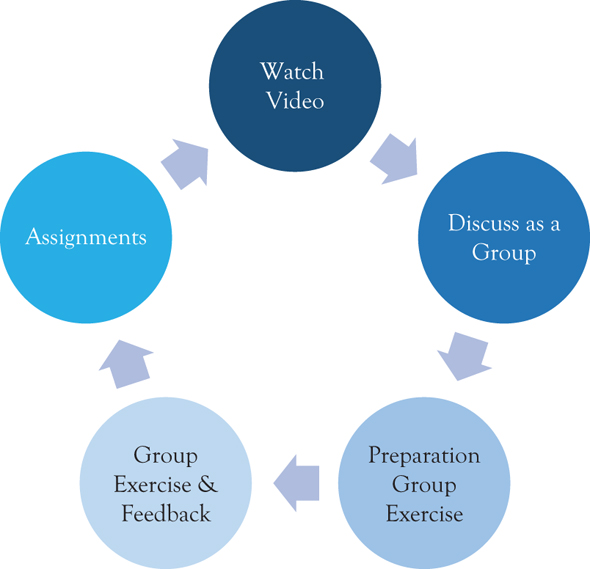Aligned interest and values for empowered emotional ownership to bring change
Summary
Underpinning the achieving of sustainable change is the alignment of interests and values. Where a change or transformation is beneficial to those seeking the change, to those leading, to those implementing, and those experiencing the change, better results can be achieved. It is the coming together of both interests and values because this forms the emotional bond. From this emotional bond comes empowerment, ownership, the attracting of attention, motivation for sustaining, and a range of other emotions for change. Bringing the emotional bond through the alignment of interests and values within an emergent behavior is considered in this chapter.
Key Learnings
Key learnings from this chapter include:
• Successful change comes when both the interest and values are aligned across those seeking to make changes, those leading the change, those implementing changes, and those experiencing and/or responding to change.
• If the individual is engaged and motivated to achieve the change, the emergent behavior is a collection of outcomes to deliver.
• An Inferior Implementation, just being told what to do, the feeling of being ignored, and insufficient understanding, all detract from the implementation of change and the alignment of interests and values. A reluctance to change or a resistance to change or uncertainty around change is part of the change process. These are not exceptions; rather they are the norm and an integrated part of change.
• Feedback that is supportive and motivational and shows caring helps with skilling as well as aligning interests and values.
• The decision on how to use skilling and training and its role in aligning Interests and Values and in the Empowered Emotional Ownership is a leadership responsibility.
Introduction
When there are shared interests, collaboration tends to occur. Change is about people and the emotional response from people who tend to associate with those of similar Interests and Values. When the interests and values are aligned, a greater extent of collaboration and cooperation is often seen. Successful change comes when both the interest and values are aligned across those seeking to make changes, those leading change, those implementing change, and those experiencing and/or responding to change. Interests and Values are how attention is gained, the emotional bond formed, motivation sustained, and messaging becomes effectual.
It is the role of leadership to bring people of similar but differing interests and values together to achieve the change. Look no further than the losing sports team with internal arguments: players and coaches are of differing interests and the common values of a winning team are missing. Indeed, the conflict in values or the misalignment of interests is often a root cause for change being less effective. In a digital transformation where the interests are different, those in fear for their jobs look at things differently to the technology evangelist. Techniques from the declining of meeting requests, to reprioritization of work, to seeking more details, to reallocating resources, or waiting for others can all be used to “slow” a transformation where interest and values differ.
Although Interests and Values (the I in AMEDLI) are listed last, they underpin so many other aspects for achieving change. Where the Interests and Values are aligned, it makes Ambiguity Management easier. The emotional bond of Messaging comes from the Interests and Values being realized and the alignment makes messaging more effective. Empowered Emotional Ownership is supported by the alignment of Interests and Values. Decision Making is often emotional (justified with logic) with emotional outcomes for those making a decision and those impacted by a decision. Leadership is the crafting and shaping of an emergent behavior from emotional actions where the alignment of Interests and Values enables the emergent behavior.
COVID-19 showed the importance of alignment of interests and value. Indeed, keeping people safe make the alignment inherent, but aspects like restrictions of movement also disrupted the alignment with impacts upon outcomes. COVID-19 (Weekly Mirror Message—Transformation Lessons from COVID-19—https://youtu.be/YqLFAEFCyeM) showed the importance of:
• Relate to Me—COVID-19 saw protests on restrictions of freedom used as a measure to contain the spread. This is an example of where interests and values were no longer aligned and impacted the success of the emergent behavior.
• Adoption and Adaption—COVID-19 showed that the response changed over time as more was found out about the virus. Also, when breaches in quarantine occurred, a revised response was required with decisions made.
• Feedback which Motivates—During COVID-19, leaders provided feedback to staff and citizens on what they were doing well, why it was important, and the need to sustain and/or improve the effort.
• Skilling and Training—Integral to the containment of the virus was skilling (the ability to do) and training (the how to do). From how frequently to wipe down surfaces in guidelines, to the proper wearing of face masks, to quarantine procedures, skilling and training were important. The absence of proper skilling and training led to breaches in quarantine and the spreading of the virus.
The quarantine failures that led to the spreading of the virus were characterized by guards who were not properly trained, were underpaid, were poorly managed, and were disengaged from the importance of their work and are now recorded within the COVID-19 response. Aspects of the alignment of Interests and Values are seen in this chapter, together with their underlying role within AMEDLI (Ambiguity Management, Messaging, Empower Emotional Ownership, Decision Making, Leadership, Interests and Values). The relation to the individual of change and adoption and adaption to change is covered. The right feedback as well as the skilling (ability to do) and training (how to do) within interests and values alignment is noted. Some next steps are included.
Relate to Me
To Get the Most
In crafting and shaping an emergent behavior, it is the actions and decisions of individuals with ownership and empowerment in response to emotions that are needed (Weekly Mirror Message—Individuals and the Status Quo in Sustainable Change—https://youtu.be/6bzCMmAd95I). Having pride in who we are and what we do is how the actions are achieved (i.e., an emotional response). The alignment of interests and values is how teams are formed and an emergent behavior fashioned. Any change has to be understood, meet the interests and values, and “Relate to Me.” The winning sports team or the functioning of the military unit is based on shared interests and common values.
Setting the Example
Similar to the leadership being able to answer the basics around change (see Chapter 1 Section “The Basic Questions” and Figure 6.2), those undergoing change need to be able to answer similar questions (Figure 7.1). The Interests and Values come through an understanding of what is being done, why, and how it relates to the individual. Taking away the amorphous or the abstract and making it real at the individual level (e.g., you gain this, or you lose this if not done, or you can hurt this loved one) is how change is realized. If the individual is engaged and motivated to achieve the change, the emergent behavior is a collection of outcomes to deliver. The Interests and Values are influenced by the Empowered Emotional Ownership as much as the Interests and Values bring the Empowered Emotional Ownership. The change is motivational and aspirational, but is also believable, so that it can be achieved, even if it is in stages (e.g., the sports team winning a championship is motivational, believable, and obtainable, even if it may take a couple of seasons to achieve). This is important for creating confidence, self-belief, and belief in the process.
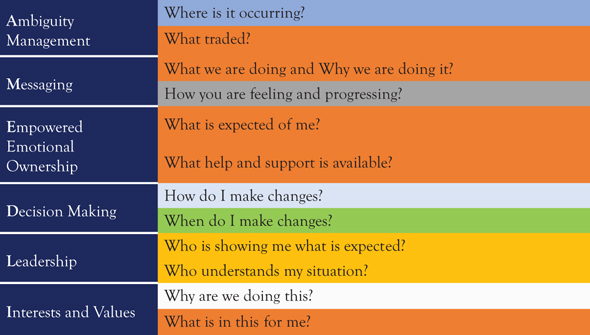
Figure 7.1 Who, why, what, where, when, how alignment so “I can adopt and adapt”
Ask yourself or those around you experiencing a change if they feel better when:
• Ambiguity—The ambiguity is being managed.
• Messaging—There is clarity of messaging.
• Empowered Emotional Ownership—You feel a sense of ownership and empowerment, and you have an emotional investment in the outcome.
• Decision Making—Decisions are being made and you know what is required and where to respond.
• Leadership—Leadership is being the change they wish to see and treating you as they would be treated.
• Interests and Values—What is being asked of you aligns with your interests and values.
The easiest way to “relate it to me” is ask yourself if the basic questions are being answered:
• “Would you feel better if you had answers to these questions?”
• “Would those around you feel better if they had answers to these questions?”
• “Can you, who is asking others to do things differently, answer these questions to make those around you feel better?”
If not, then it needs to be addressed. Then it is about asking those who are experiencing the change “if the change relates to them?” Again, if not, actions need to be taken to achieve this. This starts with leadership being the change they wish to see and treat others as they themselves would be treated.
Further Details
• Messaging—Emotional messaging is how change is related to an individual (see Chapter 3 Section “Communicating to Form Bonds”).
• Video—Weekly Mirror Message—Managing People Shutdown (https://youtu.be/m_PsC1gObd8).
• Video—Weekly Mirror Message—The Role of the Individual (https://youtu.be/7ZzKoFwtPiw).
• Video—Problem Solving Together for Our Future: Sharing Skills and Expertise—“Relating It to Me” (https://youtu.be/5Dmk0f3JJp0).
Adoption and Adaption
To Get the Most
Realizing sustainable change is nuanced. It often takes time and requires a capacity and capability building to form an emergent behavior to bring and sustain the change. A reluctance to change or a resistance to change or uncertainty around change is part of the change process. These are not exceptions; rather they are the norm and an integrated part of change. Adopting and adapting an emergent behavior is the combination of strategy and leadership, strengthened with skilling, to influence the environment, to instill the behaviors, which gives the capacity and capability to form the emergent behavior through adaptiveness, responsiveness, and resilience.
Setting the Example
Forming an emergent behavior has its challenges; mistakes will be made and require a multitude of approaches with consistency and persistency and sustained effort. There is no one size fits all approach and there is no magic wand or silver bullet. Yet these very challenges are the reason to do it, because by helping us, we change ourselves, and we realize the required change. The success of the implementation (Figure 7.2) impacts the adoption and adaption.
The use of AMEDLI helps with an implementation (see Chapter 1 Section “AMEDLI”), but it is where the Interests and Values of individuals are missing that issues occur:
• Inferior Implementation—A poor implementation weakens the Empowered Emotional Ownership, and the alignment of Interests and Values is impacted.
![]() Poor planning and/or preparation.
Poor planning and/or preparation.
![]() Inconsistent communication.
Inconsistent communication.
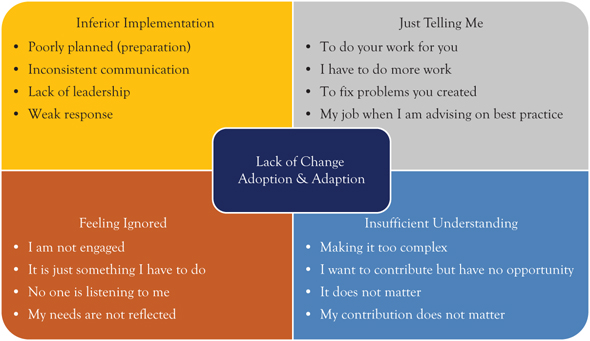
Figure 7.2 Overcoming to create and sustain motivation
![]() Lack of leadership where leadership is not the change they wish to see, and leadership are not treating others as they themselves would be treated.
Lack of leadership where leadership is not the change they wish to see, and leadership are not treating others as they themselves would be treated.
![]() Weak response to variations needed.
Weak response to variations needed.
• Just Telling Me—If you are just being told things, a range of emotions are created, and it builds resentment. The Interests and Values are unaligned, the emotional bond is weakened.
![]() I am being told by you to do your job for you.
I am being told by you to do your job for you.
![]() I have more work to do and I am busy enough as it is.
I have more work to do and I am busy enough as it is.
![]() I am fixing problems you created with your change work.
I am fixing problems you created with your change work.
![]() You are telling my job and you are not listening to me. • Feeling Ignored—The feeling of being ignored, or not asked, creates a feeling that they are not valued and part of the solution. Therefore, the Interests and Values are reduced with the corresponding impact upon the Empowered Emotional Ownership.
You are telling my job and you are not listening to me. • Feeling Ignored—The feeling of being ignored, or not asked, creates a feeling that they are not valued and part of the solution. Therefore, the Interests and Values are reduced with the corresponding impact upon the Empowered Emotional Ownership.
![]() I am not engaged and there is no point in engaging.
I am not engaged and there is no point in engaging.
![]() It is just something I have to do.
It is just something I have to do.
![]() No one is listening to me.
No one is listening to me.
![]() My needs are irrelevant so why bother.
My needs are irrelevant so why bother.
• Insufficient Understanding—Where there is an understanding and the contribution is valued, the Empowered Emotional Ownership is formed, and the Interests and Values are aligned.
![]() It being made too complex.
It being made too complex.
![]() A sense that I am unable to contribute even though I want to help.
A sense that I am unable to contribute even though I want to help.
![]() A feeling that it does not matter.
A feeling that it does not matter.
![]() The knowing that my contribution does not matter.
The knowing that my contribution does not matter.
It is the responsibility of leadership to work to overcome the implementation issues and to help sustain the efforts through working to align Interests and Values.
Making It Real
Two examples for the alignment of Interests and Values are presented.
Businesses can adopt and adapt at many levels. From executive leadership, to managers, to team leads, or us as individuals, it is still about starting. It is about making small changes in the way we do things and to apply them consistently and persistently. An approach to try (Figure 7.3) is as follows:
• Within your work team, have a series of session for say 30 minutes over a period of time to build capacity and capability within the team.
• Pick a theme and watch one of the videos, either together or alone beforehand. Please feel free to pause and use the text in the comments.
• Within the moderated group session, identify any gaps in the team, suggest areas for improvement, look for opportunities for betterment.
• Then identify options for adoption and how you plan to implement.
• Incrementally make changes and review, responding and adapting as required.
• Seek advice from Peers and review as an individual or as a group.
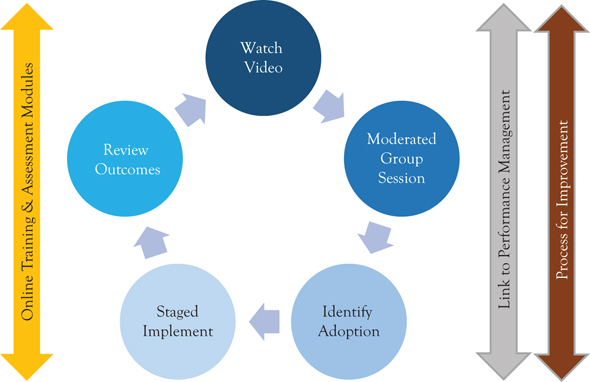
Figure 7.3 Adoption and adaption—areas of business
This can be done at the team level, or at the individual level, but also as part of a wider business area, or companywide. Other things to consider are:
• Have HR provide online training and assessment modules around the themes and developing an emergent behavior.
• Link aspects of performance management to the themes and the building of emergent behaviors by leaders.
• Provision of micro-credentials as part of training and career development.
Throughout this approach and implementation, the shared Interests and Values are central because:
• Those involved in the change are engaged and brought into the change.
• Skilling and Training are provided to enable the change.
• The support required is being provided so that people can help themselves and those around them.
• A process for betterment and sharing of experiences is included.
• A staged approach allowing capacity and capability building is provisioned.
Part of us bettering ourselves is an improvement process (see Chapter 8 Section “Making Improvements”). A business grows when it has a process for improvement. Developing the emergent behavior is a process for improvement, and a process for improvement helps develop an emergent behavior.
Courses, Accreditation, Certification
The business approach mentioned previously can be used in organizations of all types and sizes, including education and training organizations for their own business needs. Educational and training organizations can also provide courses, modules, accreditation, and certification. The themes apply to technology-based courses, business and management courses, as well as elements of these within other courses.
Consider project management. Project management is about managing people. It requires working across the silos of expertise, to bring people together to produce the required outcome. The overarching approach of AMEDLI helps with their implementation. Projects come together because of the resulting emergent behavior formed by the leadership of the project.
With project management as a context, those providing the skilling and training may undertake:
• Pick a theme and watch one of the videos. Please feel free to pause and use the text in the comments.
• In a moderated session, go through the principles, how they would be used, and the applicability to the course materials, for example, management.
• Provide group exercises (scenarios) for project work and present back.
• Have groups undertake the required work, related study, and present back based on the scenarios provided. Provide feedback and discuss the outcomes.
• Have assignments delivered for further work.
Supporting content can be provided as online modules, with the modules mixed and matched according to the course and its level (Figure 7.4). The modules within courses and the exercise and scenario approach with presenting results are part of the capacity and capability building. It leads to adaptiveness, responsiveness, and resilience which build emergent behavior for the future.
Through this approach and implementation, the shared Interests and Values are central because:
• An emergent behavior of benefit to the participants is being crafted and shaped.
• Skilling and Training are provided for the betterment of those involved.
• Support is being provided, together with details of what is needed and why.
Figure 7.4 Adoption and adaption—courses, accreditation, certification
Further Details
• Messaging to Overcome—Overcoming the reluctance to change requires consistent and persistent messaging (see Chapter 3).
• Making the Journey—Any reluctance to change is part of change and it is about taking people on the journey (see Chapter 6 Section “The Journey Model of Change”).
• Video—Problem Solving Together for Our Future: Sharing Skills and Expertise—Bringing and Sustaining Motivation (https://youtu.be/hoIvjCUCiqk).
• Video—Problem Solving Together for Our Future: Sharing Skills and Expertise—Adoption and Adaption (https://youtu.be/x5TdamCNOGE).
Feedback Which Motivates by Showing Caring
To Get the Most
Feedback is how we make us feel better about ourselves. Feedback is about motivation and is asking us to grow ourselves. Feedback is how we help ourselves. From pilots having colleagues fly with them providing feedback to a sports team watching recordings of a game to improve performance, feedback is part of aligning Interests and Values.
Setting the Example
Ever been ambushed by feedback? Have you had feedback weaponized against you? Have your strengths and efforts been used as a tool to run you down? Feel like you are being lectured to patronized by feedback? Do your eyes roll over when people talk about the use of feedback? Feedback is not about how much we know, but about how much we care. Feedback is how we make us feel better about ourselves. Feedback is about motivation and is asking us to grow ourselves. Feedback is how we help ourselves and is the alignment of Interests and Values (Figure 7.5).
Providing the right feedback is about finding the right place and the right time and is best done coming where there is mutual respect. Feedback may not always go right, but it is about trying and doing it for the right reasons with the right intent:
• 3-2-1—Where there is more time, try the 3-2-1 when giving feedback. Three good things. Two things to do better, done in a supporting way, with shared ideas to better. One good thing to leave feeling good about.
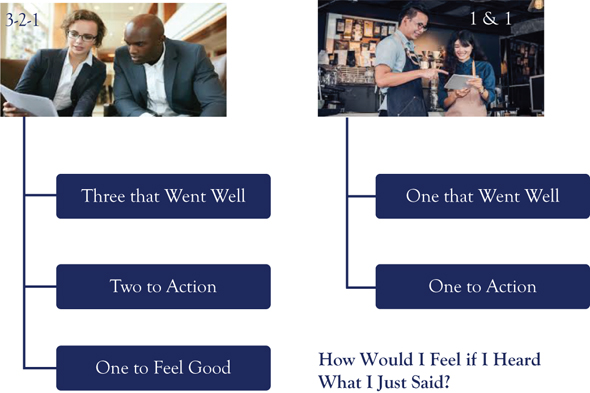
Figure 7.5 Feedback that motivates is the alignment of interests and values
• 1 & 1—Where time is shorter, try the 1 & 1 when giving feedback. One thing that went well and one thing that could have gone better, but with a suggestion of how to do it better. Share empathy and perhaps a lesson you learned through a similar mistake.
When giving feedback, take a moment to reflect upon “How Would I Feel If I Heard What I Just Said?” If you don’t care about the answer, then that tells you all you need to know. If you feel bad and demotivated, then what is that telling you? If you feel good and motivated, then what is next?
Making It Real
Use feedback in a supportive and sustaining way to motivate and support. Feedback shows the alignment of Interests and Values. Feedback is something people want to do, or they don’t. By providing feedback and by accepting feedback, it betters us over time. Again, it is a decision to do it and is a matter of just starting to do it in a supporting way.
Further Details
• Aligned Interests and Values—Feedback works better when interest and values are aligned (see Chapter 7).
• Rationalization—The processing of feedback requires rationalization (see Chapter 4 Section “Emotional Rationalization”).
• Video—Weekly Mirror Message—Feedback That Motivates by Showing Caring (https://youtu.be/HHqV9WQfCNU).
Skilling and Training
To Get the Most
Results come from the consistent and persistent application of proven principles pragmatically. Skilling (the ability to do) and Training (the how to do) help people to adopt and adapt, provide them with the support, and make them feel empowered and emotionally engaged from which emergent behaviors are formed. Skilling and Training play an important role in the alignment of Interests and Values which underpins other capacities and capabilities for managing change.
Setting the Example
Emergent behaviors are required for bringing change and for transformation and emergent behaviors which are built through the actions of individuals having ownership, empowerment, and an emotional response. Having the Interests and Values aligned helps with skilling and training, just as skilling and training help align the Interests and Values (Figure 7.6).
Training is the how to do. Training is the procedural and the instructional, often validated by testing, and uses a role-based approach (i.e., based on a role you learn how to use certain tools and follow specific processes). Skilling helps with the training. When those doing the training feel it is of value, it is in their interest, and they see a need; the training becomes integral to the emergent behaviors.

Figure 7.6 Skilling and training
Skilling is the ability to do. Often considered as the professional skills,1 skilling is what brings confidence, ownership, and empowerment, as well as used in the alignment of interests and values. Skilling is built through the use of scenarios and exercises, especially within change, and is strengthened with mentoring (see Section “Feedback which Motivates by Showing Caring” of this chapter) and situation-based work. Skilling is at the heart of crafting and shaping emergent behaviors and is the basis of AMEDLI (see Chapter 1 Section “AMEDLI”).
Within change, it is the leadership that is crafting and shaping the emergent behaviors that manages the experience of individual, the team, and the organization. The leadership also manages the performance, the expertise, and the improvements required:
• Improvement Management—The frameworks, rewards, and support for the ongoing improvement of operations.
• Performance Management—The appropriate metrics, rewards, and incentives to drive the right behaviors and environment for creating and managing the performance. It is the specific compensation that drives behaviors.
• Expertise Management—The ongoing development and management of expertise (training—how to do), with revisions to operations and processes to build capacity and capability.
• Experience Management—The ongoing development and management of professional skills (skilling—the ability to do) with ongoing capacity and capability building.
Skilling and Training are part of bringing change and transformation. The sports team uses drills and practice sessions to train the team. The coach of the team uses sports psychology to build skills. Both the skilling and the training are managed as part of the emergent behavior.
Making It Real
There is a cost associated with skilling and training, especially the ongoing, repeat, and sustained. The business decision to include skilling and training within change and transformation resides with leadership. The decision on how to use skilling and training and their role in aligning Interests and Values and in the Empowered Emotional Ownership is also a leadership responsibility. The implementation is around:
• Skilling—Based on the roles and people involved in the situation, use of scenarios and exercises in skilling (e.g., aircraft accident to build the capacity and capability of an airlines to respond to aircraft accidents or fleet groundings). A series of exercises or scenarios are undertaken to incrementally build skills. This is complimented by mentoring as well as situation-specific skilling as required tailored to the specific needs. The decision is to develop and implement a program of skilling to develop the required capacities and capabilities across the team (group, company), recognizing the required roles within the emergent behavior with the needs of the individuals. The regime will change with time.
• Behaviors—From the skilling comes the emergent behaviors. The skilling needs to develop and strengthen the required behaviors whilst reducing those behaviors to the contrary. The use of People of Influence and mentoring to affirm the actions and behaviors is part of the regime required. Leadership identifies the behaviors required and who shows them. The gaps are identified and the required measures for development are identified.
• Review and Improvement—A process to track the developments, as well as a process for review, and improvement. The training regimes align, but the focus is on the behaviors to achieve the outcomes.
• Testing in Skilling and Training—Testing plays a role in skilling and training (see Chapter 8 Section “Testing”).
• Empowered Emotional Ownership—Training and skilling help create the emergent behaviors of individuals with empowered emotional ownership (see Chapter 4).
• Video—Weekly Mirror Message—The Panacea of Skilling and Training (https://youtu.be/3yKK431LL1U).
Next Steps
Aligning interests and values does not follow a simple recipe because people are complex, the circumstances vary, and the situations change over time. There are a series of steps though:
• Leadership takes a series of messages to ensure that the change relates to those implementing and experiencing the change.
• Leadership undertakes a range of activities to sustain motivation and include people within the change.
• The use of positive and supportive mentoring.
• The use of skilling and training within an emergent behavior.
Whilst these are nuanced and take time to develop and realize, it is a decision of leadership to use these proven pragmatic practices.
1 Professional skills include people management, financial management, vendor management, relationship management, strategy and planning, risk management, project management, problem solving, management of change in the business, management of ambiguity, governance, compliance management, cross-disciplinary collaboration, and communication and presentation.

